Air Conditioning - Drinkable Water Technology
Written by Fulmina Institut
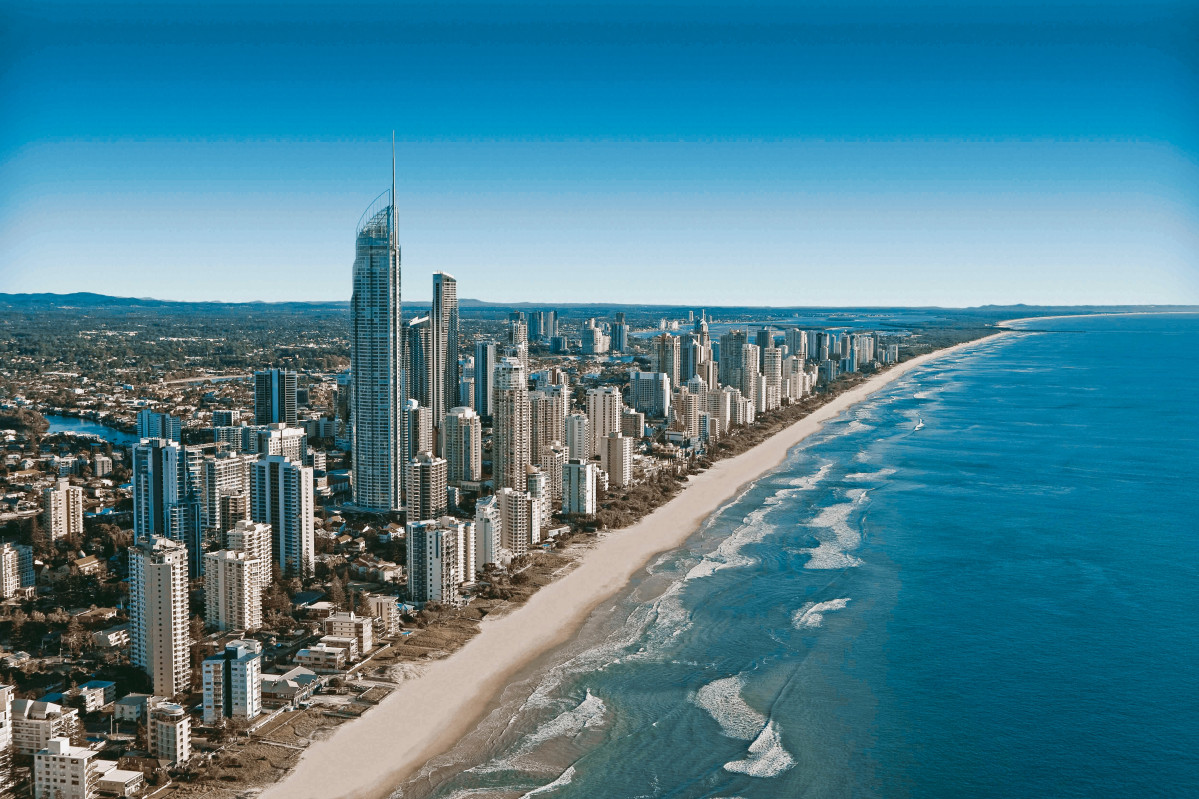
Project Master Stéphane Labelle
Air Conditioning Technology Coupled to a production of Drinkable Water (Natural Gas Economy)
Abstract
In the tropical countries of the Middle East, where temperatures can climb regularly over 40C, many countries use their natural gas productions to procure Air Conditioning to their factories, public buildings (government, airports, etc.) their houses and energy intensive refrigeration cycles for the liquefaction of natural gas. For some of these countries, the energy necessary to produce this cooling represents more than 70% of the totality of their production of natural gas. They only can export approximately 20% of their production. Our technology allows an economy of up to 80% of this natural gas, which represents massive economic gain. This technology is also coupled to a production of drinkable water, which, for many of these countries, combines a very pressing need and sometimes an urgent one.
The Air Conditioning technology
EH2 Solar has developed an innovative desalination technology that cools down buildings and other processes very efficiently. The great advantages of this technology are that we use the available cooling from the deep sea water or from the evaporation of 13% of the water produced during nighttime and distribute it very efficiently while saving 80% of the energy needed for cooling.
Two sources of energy :
- The very cold waters of the deep seas represent an inexhaustible source of cooling that we transport in a mix of ice/water that saves 80% of the cooling costs in energy. When sea water becomes ice, its water becomes pure. This is a well known phenomenon that has been studied over long many years, but was little used until the discovery of our new Freeze Desalination Technology EH2 Solar.
- The nocturnal evaporation of 13% of waters that can be collected during the night, specifically in mountainous regions, where nights are much cooler than days. The evaporation of one kilogram of water produces 2 255 KJ (Kilojoules) of cooling (See Diagramme in Annex 1) that will be transported by the ice/water mix, as described above.
Note :
The joule is a derived unit of energy in the International System of Units. It is equal to the energy transferred (or work done) to an object when a force of one newton acts on that object in the direction of its motion through a distance of one metre (1 newton metre or N·m). It is also the energy dissipated as heat when an electric current of one ampere passes through a resistance of one ohm for one second.
These two technologies combined allow economic gains that can reach up to 80% of the cost of the natural gas necessary to produce cooling in traditional air conditioning systems.
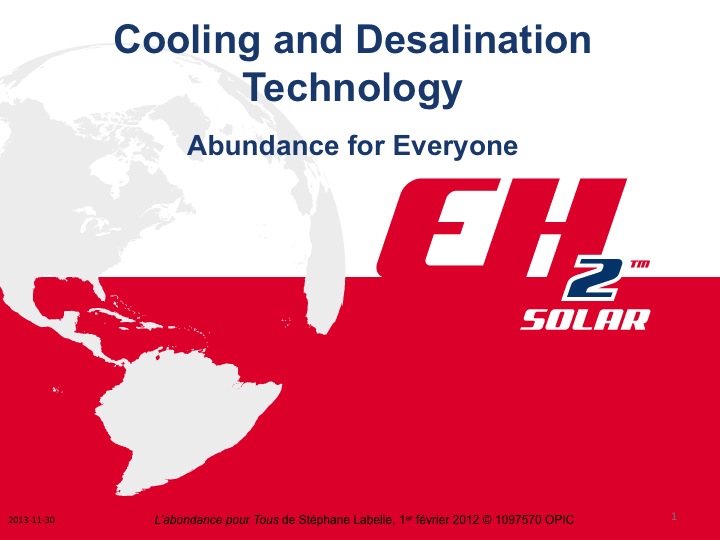
Desalination Technology
The desalination technology developed by EH2 Solar is a freeze desalination technology: we can recuperate the salt at the same time. The ice water mix produced is then easily transported as a fluid (ice and water mix) into pipes over distances of 1000 km or more while losing less than 5% of the cooling. The ice water mix temperature being 0°C will be delivered to the different sites to be cooled by pipeline and produce all the necessary cooling but also for agriculture by adding our oxygenation technology Agriculture : A natural method for cultivating

Amortization of the investment
This process provides an energy gain so important that it pays back the system’s installation cost in less than one year, for most countries involved. The following table shows some indications:
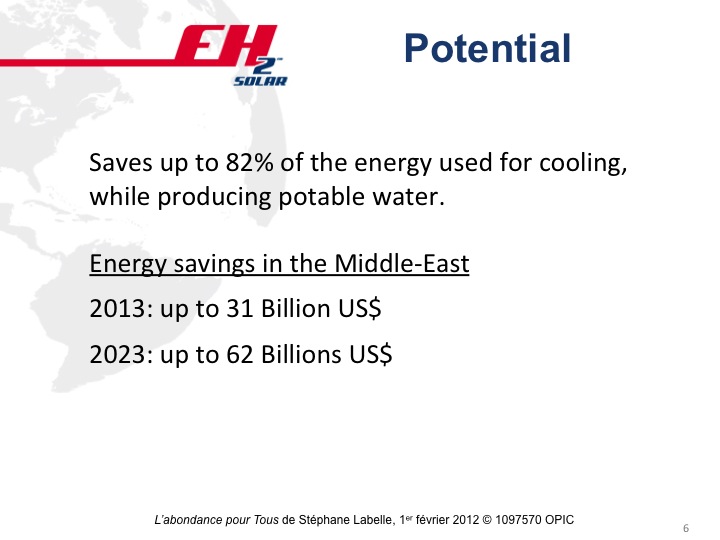
And
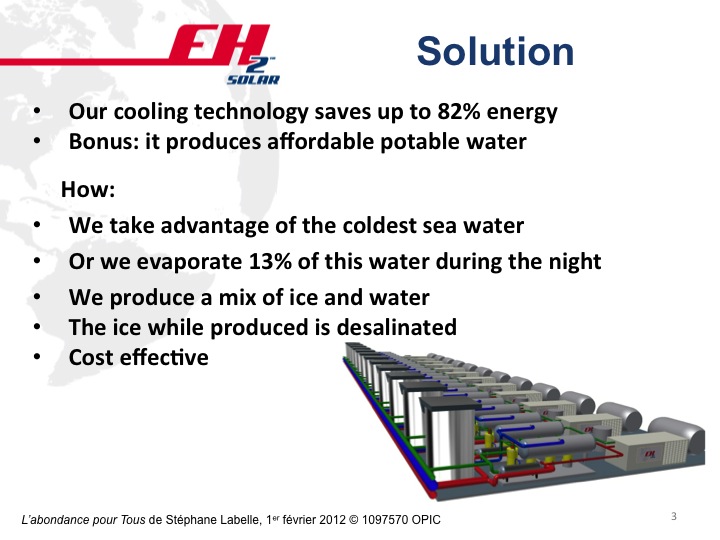
Each country can compute the economies made by adding the profits generated by the extra income liberated for exportation, to the gains made by the difference in cost of production of the water by our desalination system as compared to traditional ones:
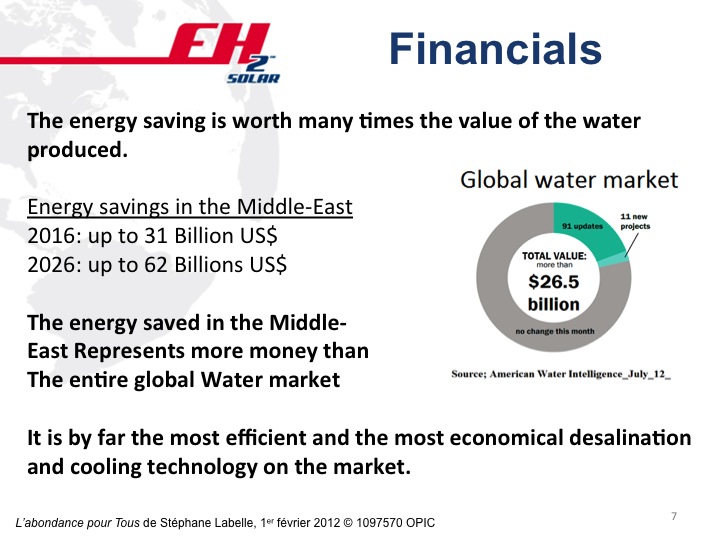
Other advantages: Environmental Impact
One must take into account the environmental impact of the technology used: EH2 Solar is the most environmentally friendly desalination technology on the current market because there is no chemical product added in the process, no impact to marine life.
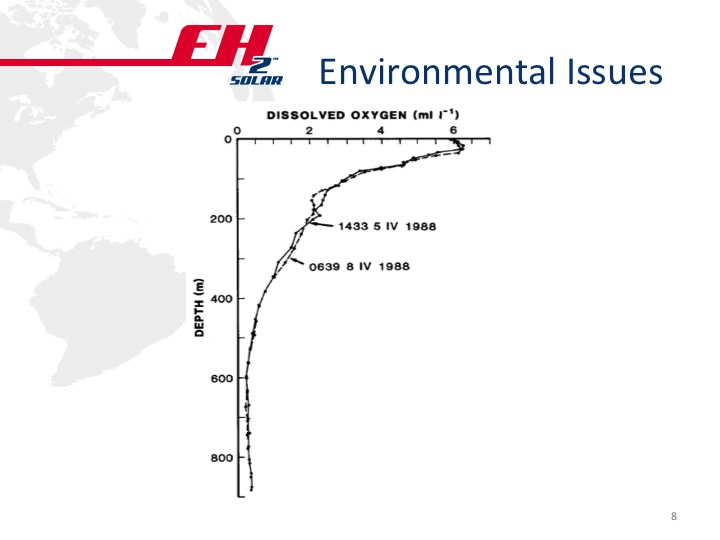
A quick ratio of oxygen levels taken from the graph can lead to the conclusion that, in this study and at this location, there is a 96% reduction in the density of marine life at 600 meters depth compared with 20 meters under the surface.
It can be shown that the total amount of marine life entering an intake system is directly dependent on its density at the point of entry.
And :
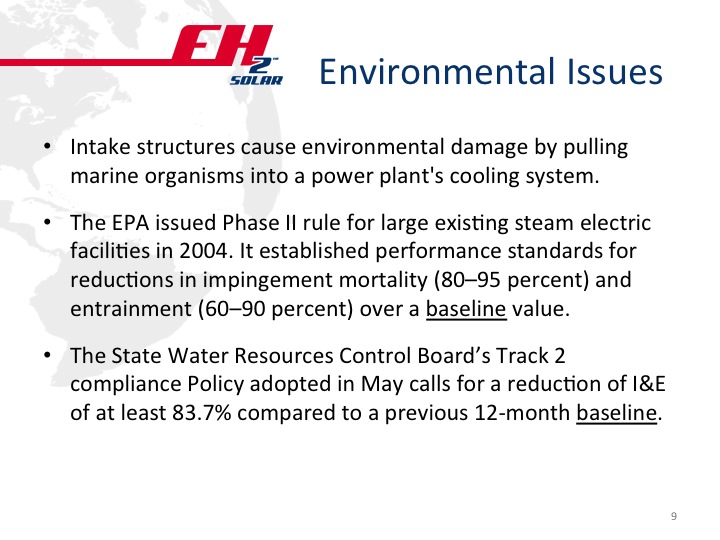
Annexe 1
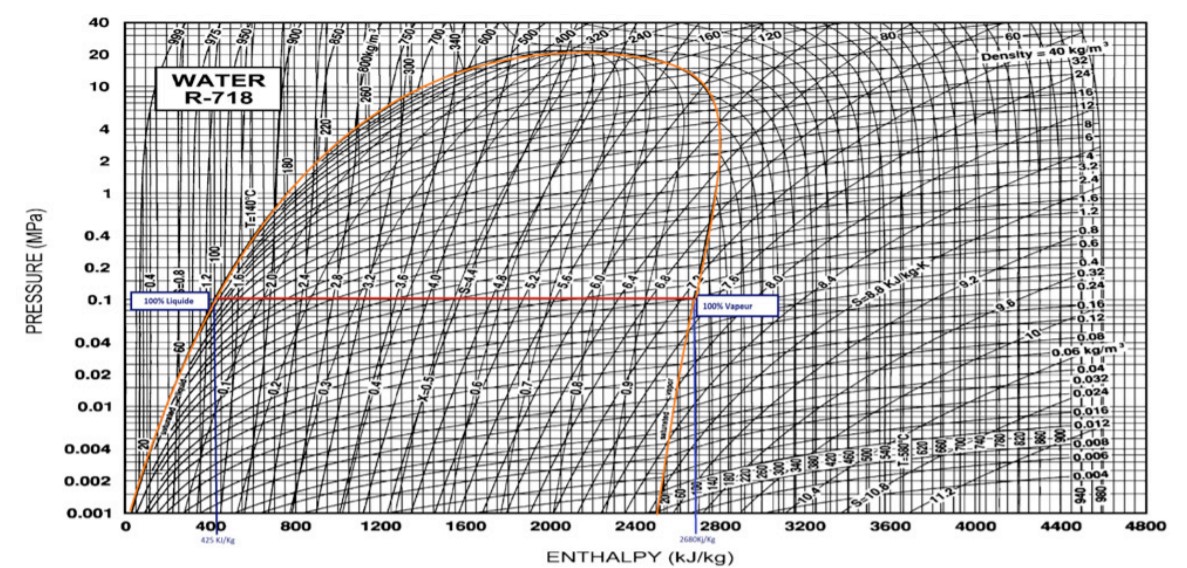
Cooling Agent R-718: Water
In the above graph, the space under the bell delimited by the orange line the red horizontal line at 0.1 MPa, and the blue vertical lines between the enthalpy measures from 425 KJ/Kg and +/- 2680 kJ/kg, represents the passage of water from liquid state on the left to the state of complete gas on the right. If there is no variation in temperature of water we obtain 2255 kJ/kg; in reality there is always a small variation and this is why we speak of 2 300 kJ/kg. Theory demonstrates that a minimum of 2255 kJ/kg applies. It does not cost more than 330 kJ to freeze one kg of water.
Note :
Cooling Agent R-718: Water 2001 ASHRAE HANDBOOK, CHAPTER 20, THERMOPHYSICAL PROPERTIESOF REFRIGERANTS, page 20.32 Fig. 13 Pressure-Enthalpy Diagram for Refrigerant 718 (Water/Steam) Click Here
Enthalpy is a measurement of energy in a thermodynamic system. It includes the internal energy, which is the energy required to create a system, and the amount of energy required to make room for it by displacing its environment and establishing its volume and pressure. Enthalpy is defined as a state function that depends only on the prevailing equilibrium state identified by the variables internal energy, pressure, and volume. It is an extensive quantity. The unit of measurement for enthalpy in the International System of Units (SI) is the joule, but other historical, conventional units are still in use, such as the British thermal unit and the calorie.
Production of drinkable water from condensation
We can produce water by condensation in regions too far from water sources where the level of humidity in the air is high. The same is true in regions where there is no salted water source in proximity. It is possible to capture water available in the form of vapor by condensing with the aid of dehumidification technology specially adapted to our solar technology systems, converting 40% of the solar energy in electricity to feed the compressor of the system. The available 60% of energy will be transformed into cooling by an absorption system providing the necessary cooling to condense the water and finally, providing fresh water in desert areas.
Copyright Fulmina Foundation
Powered by Froala Editor
